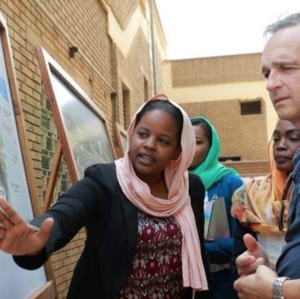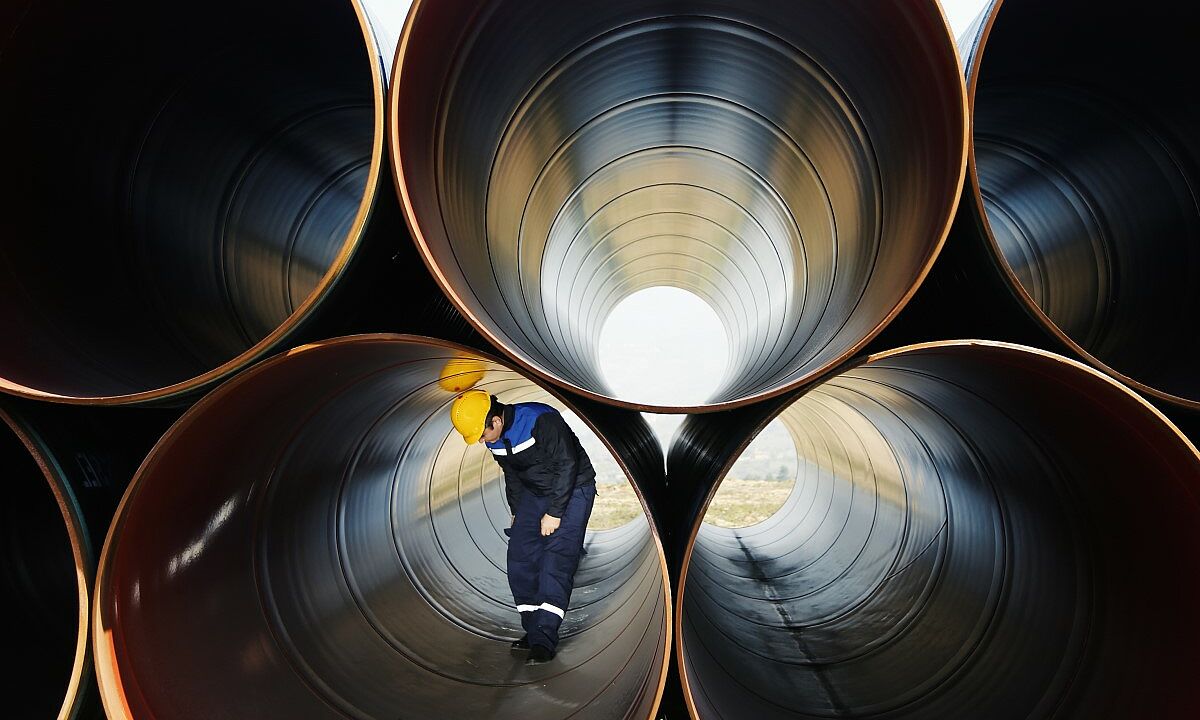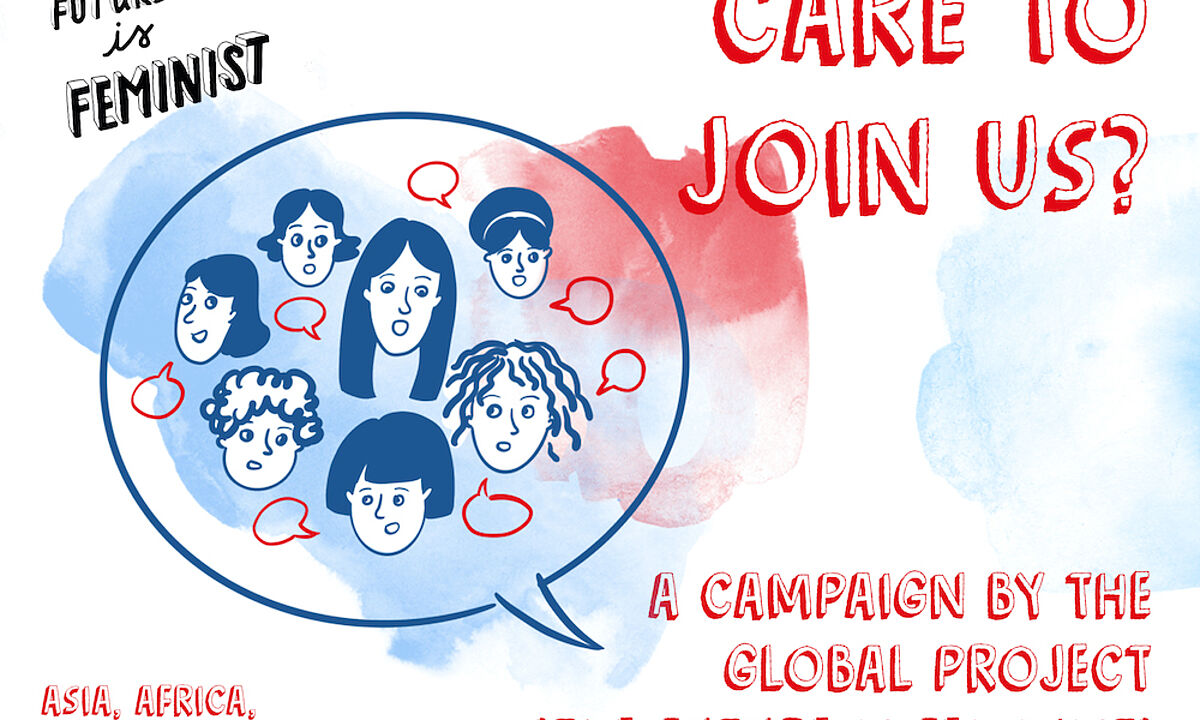#YouthParticipation: Nisreen Elsaim, on her journey to becoming a UN Youth Climate
Nisreen Elsaim, from Sudan is a FES Young Leader and a MENA Region FES Climate Young Leader. Her journey to becoming a leader among her peers is one that is encouraged and should be emulated globally. She is a great example of how engagement of youth can bring about democratic change. In this article we interview Nisreen to find out briefly about her journey to becoming a UN Youth Climate Envoy and how that makes a difference.
How did you become a UN Youth Climate Envoy?
The Pan African Climate Justice Alliance (PACJA) nominated me as an African Climate Champion to the Office of the UN Secretary-General’s Envoy on Youth. PACJA is an umbrella organization for more than 1000 African organizations working on issues around climate change.
As one out of thirty UN Youth Climate Envoys my mission was mainly to coordinate the Youth Climate Summit and facilitate youth participation in the Climate Action Summit. We worked very closely with Mrs. Wickramanayake and her team as well as the Secretary General and his Special Envoy for the 2019 Climate Change Summit H. E. Luis Alfonson de Alba.
Of course, our work is yet to be completed. We have many more things in the pipeline which involve young people from all over the world. We want to showcase their efforts, share the best practices we’ve picked up, and pass on some of the lessons we’ve learned.
What message did you deliver at the 2019 Climate Summit?
The main message that I delivered was that there is no more time. We need to stop talking and start doing.
What are some of the environmental changes—due to climate change—that is affecting Sudan?
Sudan is a country that is heavily dependant on natural resources. It supports local economies, provide people with their livelihoods–basically everything. Due to climate change, we’re currently seeing changes in rain fall patterns, which is affecting the agricultural industry.
Increasingly severe rain fall now causes annual floods. This year, more than 184,000 people were displaced due to flooding of their houses on lands spanning over 490 miles. These projected figures came from 2 states only.
On the other side of things, we are dealing more and more with the impact of droughts. This will inevitably lead to famines, such as those witnessed in 1974,1981 and 2004. Unfortunately, in one of the models, it is speculated that Sudan could face similarly sever droughts every 8 years.
Land degradation, desertification and soil erosion are another casualty of climate change. Annually, the country loses almost 20 hectares and this phenomenon is only growing. Sudan also suffers from forests burnings and fires. It isn’t nearly as much as what is seen in the Amazon but it is still a huge loss.
What people need to understand is that the instability caused by climate change played a major part in the conflicts within Sudan. When we look at the post-conflict discussions surrounding the Darfur crisis, we know that it was the first time that the UN Security Council acknowledged in one of its resolutions, that climate change is a driver of conflict. The issues of land, food, water security and the health of the Sudanese peoples are all tied to their surroundings. They are all vulnerable to climate change. Despite all the efforts of the government to contain Malaria, mosquitos, due to the changing weather, stronger more resilient species are emerging. The same can be seen in the cases of both yellow fever and dengue fever, which we did not have in the past.
What solutions are on the horizon?
We must adapt. However, how to adapt remains the key question—this is without even factoring the need to develop the country and raise people out of poverty in such circumstances. While I don’t have any of the solutions, understanding the issues, addressing them, and creating plans to adapt is key.
What is your prognosis in case of inaction in the country?
Environmentally. Socially. Economically. Everything will be chaotic. Sudan could easily become a failed state and become entirely dependant on the international community, if we are inactive. That is, if we don’t burn from the heat waves before that time.
How can youth contribute to reach these solutions?
Youth are the solution. Through our keen knowledge of technology, our ability to innovate, our connectedness to both local and international knowledge, we can work together to come up with solutions. By directing our energy and efforts towards driving policies, creating strategies that allow us to adapt, raising our voices in the climate negotiations we can make a difference.
The youth of the 'developed world' have a greater responsibility to push their governments to end the use of fossil fuel and to do more when it comes to climate funds. On the other side, the youth of developing nations should think outside the box about how to save their local communities now and secure their future—because no one else will do it for them.
###
Nisreen Elsaim, from Sudan is a FES Young Leader and a MENA Region FES Climate Young Leader.
Find out how to apply for an FES scholarship by clicking this link (info in English and Spanish). If you are current or a former scholarship recipient and would like to join the FES Alumni Mentoring Programme email the FES team at mentoring(at)fes.de.
About FES Connect
Connecting people, in the spirit of social democracy, we source and share content in English from the German and international network of the Friedrich-Ebert-Stiftung.






